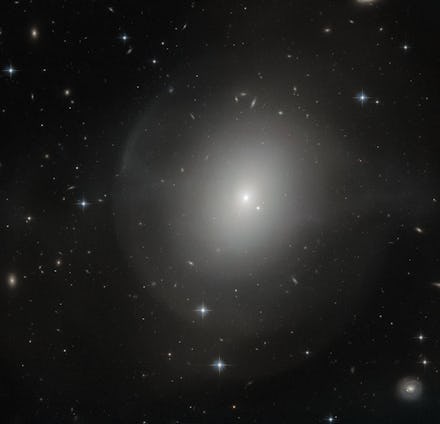Scientists Just Found Ionized Oxygen in an Ancient Galaxy

Astronomers have just found traces of the most distant oxygen ever discovered, and it could help us learn more about a mysterious period in our universe's past.
The team discovered ionized oxygen in a galaxy called SXDF-NB1006-2 that sits about 13.1 billion light-years away from Earth. That means we're seeing the galaxy as it was just 700 million years after the Big Bang.
Why this is important: The early universe was filled with lots of neutral gas and not much else right after the Big Bang happened. Once the first stars started to form, they emitted radiation that charged up all that neutral gas. Astronomers call this period of time "cosmic reionization," but we don't know much about it. We aren't sure what kind of objects emitted the radiation or how the first galaxies formed.
Astronomers are trying to piece together this mystery by studying the chemical composition of early-universe galaxies. Specifically they're looking for traces of heavy elements, or in this case, anything besides hydrogen or helium.
"Seeking heavy elements in the early universe is an essential approach to explore the star formation activity in that period," lead researcher Akio Inoue said in a press release. "Studying heavy elements also gives us a hint to understand how the galaxies were formed and what caused the cosmic reionization."
Oxygen is present in SXDF-NB1006-2, but in very small amounts, according to the research describing the discovery. It's about 10 times less than the oxygen found in the sun.
"The small abundance is expected because the universe was still young and had short history of star formation at that time, astronomer Naoki Yoshida said in the press release.
But the presence of any ionized oxygen suggests lots of luminous, giant stars formed inside this galaxy and emitted enough ultraviolet light to ionize the oxygen. The team will continue to study the galaxy with the Atacama Large Millimeter/submillimeter Array telescope.
"This is an important step towards understanding what kind of objects caused cosmic reionization," astronomer Yoichi Tamura said in the press release. "Higher resolution observations will allow us to see the distribution and motion of ionized oxygen in the galaxy and provide vital information to help us understand the properties of the galaxy."
Read more: